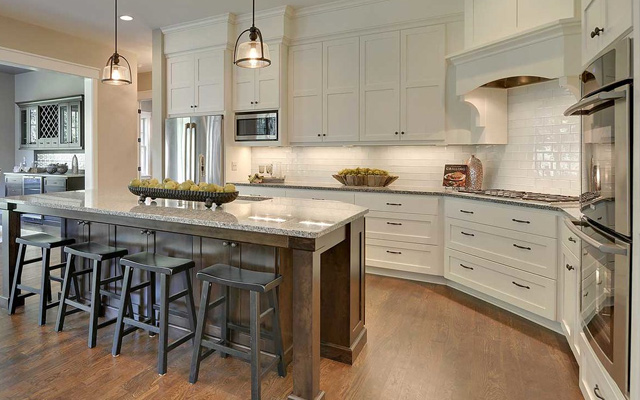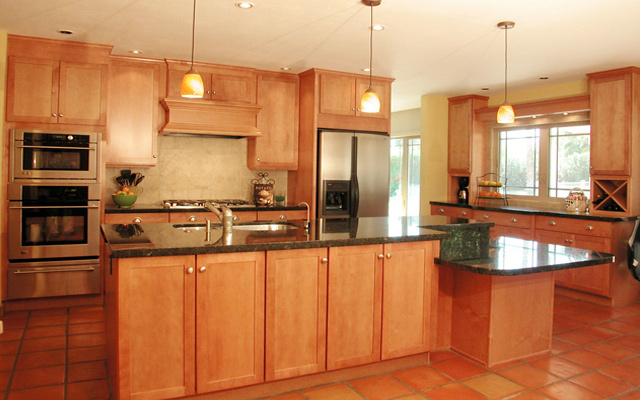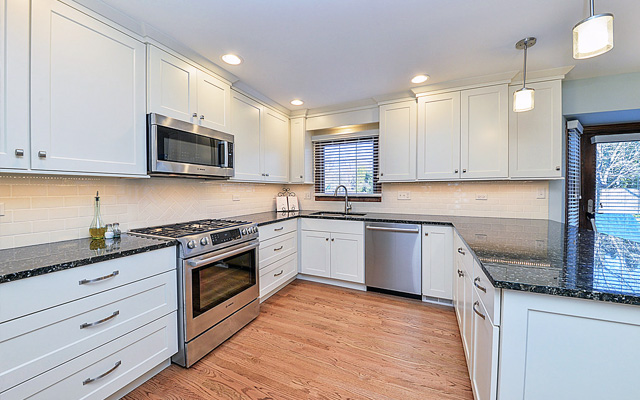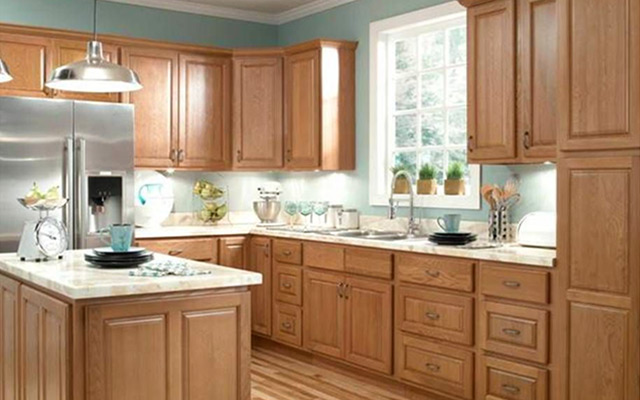
Have you ever marveled at the beautiful cabinets in your kitchen and wondered how they are made? The process of making kitchen cabinets is a complex one that involves careful planning, precise measurements, and skilled craftsmanship. Canadian manufacturers like AACabinets.ca take great pride in their expertise in kitchen cabinet making.
Let’s go through the entire process of making kitchen cabinets, starting from the materials used to the manufacturing process. Whether you’re a homeowner looking to understand how your kitchen cabinets were made or a woodworking enthusiast interested in the process, this article will provide you with a comprehensive overview of the cabinet-making process. So, let’s dive in and explore the fascinating world of kitchen cabinet manufacturing!
Materials – What are your cabinets made of?
When it comes to kitchen cabinets, the materials used can greatly impact the overall look and durability of the finished product. Here are the two most common types of materials used for making kitchen cabinets, along with their advantages and disadvantages:
1. Solid wood

Solid wood is a popular choice for those who want a traditional, high-quality look. It’s also a great option if you’re looking for durability and longevity, as solid wood cabinets can last for decades with proper care. Some common types of wood used for solid wood cabinets include:
- Oak: This wood is strong, durable, and has a distinctive grain pattern that looks great in traditional kitchens.
- Maple: Maple wood is very hard and can withstand heavy use, making it a great choice for high-traffic kitchens.
- Cherry: Cherry wood has a rich, warm tone that looks great in both traditional and modern kitchens.
- Walnut: Walnut wood is a high-end option that has a luxurious, rich look.
Pros:
- Durable and long-lasting
- Beautiful, natural look
- Can be sanded and refinished to restore their original beauty
- Adds value to your home
Cons:
- Expensive
- Can be susceptible to warping and cracking over time
- Requires regular maintenance and cleaning
2. Engineered wood

Engineered wood, also known as composite wood or particle board, is a more cost-effective option that still provides durability and versatility. It’s made by pressing wood fibers or particles together with adhesives to create a strong, stable board. Some common types of engineered wood used for kitchen cabinets include:
- Plywood: Plywood is made by layering thin sheets of wood together and gluing them to form a solid board.
- Medium-density fiberboard (MDF): MDF is made from wood fibers that are compressed under high pressure to create a strong, dense board.
- Particleboard: Particleboard is made from wood particles that are bonded together with resin and compressed into a solid board.
Pros:
- More affordable than solid wood
- Resistant to warping and cracking
- Available in a variety of finishes and styles
- Low-maintenance and easy to clean
Cons:
- Not as durable as solid wood
- Can’t be sanded and refinished like solid wood
- Can be susceptible to water damage if not properly sealed
By understanding the pros and cons of each material, you can make an informed decision when choosing the right kitchen cabinets for your home.
Kitchen Cabinets Manufacturing Process
- Material Selection: The first step in manufacturing kitchen cabinets is to select the materials. Common materials used for cabinet construction include solid wood, engineered wood, plywood, and medium-density fiberboard (MDF). Each material has its own advantages and disadvantages, and the selection depends on the design and budget.
- Cutting and Shaping: Once the materials are chosen, the next step is to cut and shape them into the desired sizes and shapes. This is typically done using saws, routers, and other specialized woodworking tools. The pieces are cut to the exact measurements specified in the design plans.
- Sanding: After cutting and shaping, the pieces are sanded to remove any rough edges and smooth out the surface. This ensures that the final product is free of splinters and rough spots. Sanding is typically done using sandpaper or a sanding machine.
- Joining: The next step is to join the pieces together to form the cabinet structure. This is done using a variety of techniques, including dovetail joints, biscuits, mortise and tenon joints, and dowels. The choice of joining technique depends on the design and the strength requirements.
- Finishing: Once the cabinet structure is complete, it’s time to add the finishing touches. This includes adding any molding or trim to the cabinets and applying the desired stain or paint. The finishing process can vary depending on the design and the desired aesthetic.
- Hardware Installation: The final step in the manufacturing process is to install the hardware, such as knobs, handles, and hinges. This is done after the finishing process to ensure that the hardware matches the final color and design of the cabinets.
Overall, the manufacturing process for kitchen cabinets involves several steps, from material selection to hardware installation. Each step is critical in creating a high-quality, durable, and functional product that meets the design and budget requirements of the customer.
Buyers’ Guide to Cabinet Types

Now that you know how kitchen cabinets are made, it’s time to choose the right type for your kitchen. There are many different types of cabinets to choose from, each with its own unique style and features.
Custom cabinets: These are made to order, so they can be customized to fit your kitchen perfectly.
Semi-custom cabinets: These cabinets offer some customization options, but are still pre-manufactured.
Stock cabinets: These are pre-manufactured and come in standard sizes, making them the most affordable option.
When choosing the type of cabinet for your kitchen, consider factors such as your budget, the style of your kitchen, and the level of customization you desire.
In conclusion, kitchen cabinets are made by cutting and joining wood pieces together, and then adding finishing touches and hardware. The materials used can vary, and there are many different types of cabinets to choose from. Whether you opt for custom, semi-custom, or stock cabinets, you can rest assured that you now have a better understanding of how they are made.

Comments are closed.